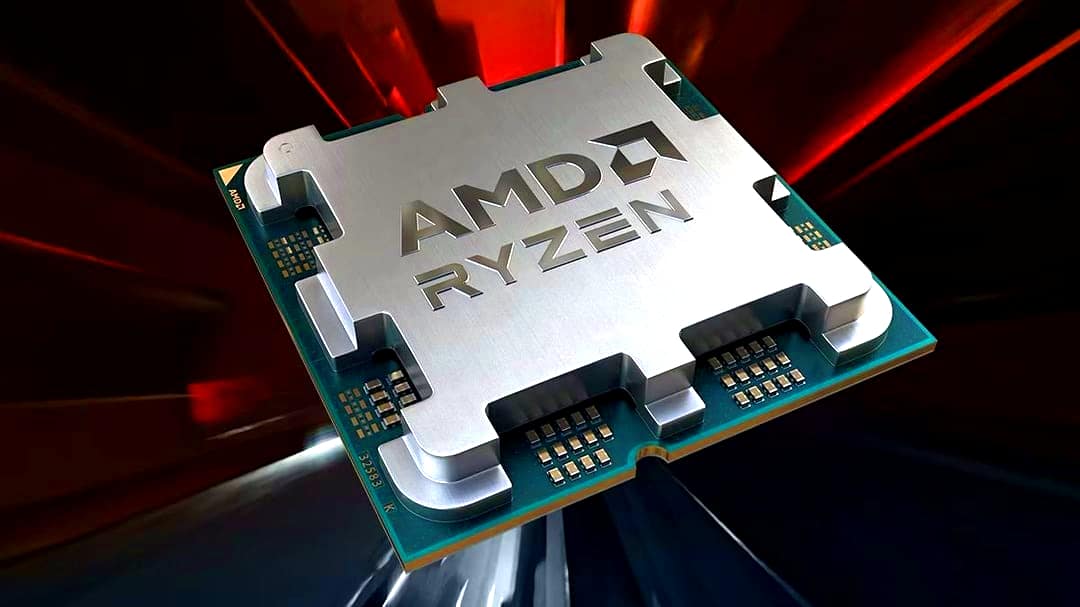Gigabyte promised “up to” 35 percent more performance at the push of a button with its new mainboards. Now it’s clear: that was a damn optimistic value.
AMD will unveil the first CPUs of the Ryzen 9000X3D series on November 7, that much is already certain. In the days leading up to this announcement, motherboard maker Gigabyte let it be known that this is supposed to be the Ryzen 7 9800X3D, which has already been scheduled several times for release before the end of this year.
But the Gigabyte report also made the rounds for another reason: the manufacturer promised a “performance increase of up to 35 percent, which can be seen in empirical tests,” with a simple BIOS setting called “X3D Turbo Mode.” Even CPUs without X3D in their name should benefit from up to 20 percent more performance.
Such a boost with a single BIOS click is almost unheard of – and it remains so, because Gigabyte itself more or less rowed back in a new announcement video for this turbo mode.
The YouTube channel “Aorus Japan”, which belongs to Gigabyte’s well-known motherboard brand, recently released a new video that goes into more detail about this X3D turbo mode.
In the video shown, Gigabyte goes into the requirements. In addition to a mainboard from the manufacturer and the latest BIOS, the function is only intended for Ryzen 9000 and AM5 CPUs with 3D-V cache. In theory, the Ryzen 7 7800X3D should also benefit from the turbo mode.
The other benchmarks presented by Gigabyte are exciting at this point. Here it quickly becomes clear that when it says “up to35 percent more performance”, the “up to” cannot be formatted thick enough.
- Because Gigabyte shows selected games and their performance gains with the turbo mode under the Ryzen 7 9800X3D in the first presentation slide. The best value: 5 percent in Tomb Raider.
- With the Ryzen 9950X, Gigabyte at least partially approaches the promise: thanks to turbo mode, Far Cry 6 can record an increase of almost 18 percent.
- Both benchmarks were measured in Full HD.
Now, a performance gain per BIOS click is certainly a good thing in itself, no matter how high it actually is.
However, the motherboard manufacturer should not have made such a bold marketing promise in the eyes of the gaming community; especially since other manufacturers such as Asus, MSI and Asrock will also have such a mode – the “turbo mode” is coming as part of AGESA ComboAM5PI 1.2.0.2 for all AM5 mainboards – and make less grandiose announcements in this regard.
Gigabyte X3D turbo mode test falls short of vendor claims — user-provided Forza Horizon 4 benchmark shows a 5% increase in average frame rates
byu/imaginary_num6er inhardware
☻
The procedure for this turbo mode has also been deciphered. In the Hardware Luxx forum, user “Iceman021” was able to demonstrate the feature on an Asus ROG Crosshair X670E with a BIOS beta version that has this functionality. The following things happen to your processor when you activate this turbo mode:
- SMT (Simultaneous Multithreading) is disabled – instead of 16 threads, an 8-core CPU will only have 8 threads available.
- Latencies and CCDs are automatically “optimized”.
- For CPUs with two CCDs, one of the two is disabled.
The latter point in particular raises further questions. With AMD’s chipset drivers, games on previous processors prefer the CCD that has the 3D cache anyway – if the other CCD is disabled, nothing changes in principle for gaming performance.
Disabling SMT also doesn’t necessarily have to be positive: CPU-intensive games have often shown better frame rates when multithreading was enabled. Whether Turbo Mode can actually bring a significant improvement in a wide range of games has yet to be proven by objective and independent tests.
freeslots dinogame telegram营销
